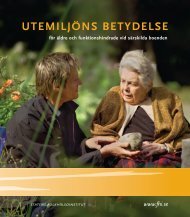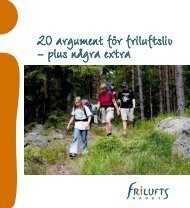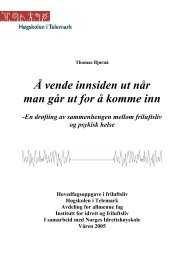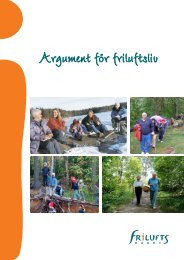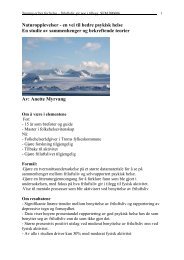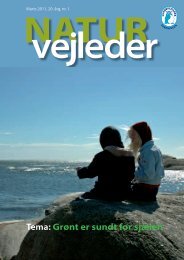Green Care: A Conceptual Framework - Frisk i naturen
Green Care: A Conceptual Framework - Frisk i naturen
Green Care: A Conceptual Framework - Frisk i naturen
Create successful ePaper yourself
Turn your PDF publications into a flip-book with our unique Google optimized e-Paper software.
6<br />
Theories and constructs used in<br />
conjunction with green care<br />
In this section we will briefly review the concepts, theories and models that<br />
have been used in conjunction with various green care approaches. Some,<br />
such as Attention Restoration Theory (ART) are closely tied to specific<br />
interventions (therapeutic horticulture in the case of ART) whilst others<br />
have been used more generally or have not been used in the context of<br />
green care but we consider them to be relevant. The purpose of these short<br />
descriptions is to act as signposts to the relevant literature. References are<br />
given at the end of each subsection.<br />
6.1 Multifactorial mechanisms<br />
The beneficial effects of green care services on human health and<br />
well-being may be mediated by a number of different mechanisms –<br />
psychological, social and physiological. Animals, for example, may be<br />
beneficial to humans because they are part of nature; are nice to touch<br />
and stroke; are a subject to care for; serve as a social companion or even<br />
a social catalyst; or serve as the subject for work that a person manages to<br />
accomplish successfully which results in enhanced self-efficacy and coping<br />
ability. Working with and experiencing plants, gardens or other aspects<br />
of a farm environment may have similar effects. It is likely that several<br />
mechanisms may be operating, either simultaneously or sequentially,<br />
representing different ways in which nature positively impacts on human<br />
health and well-being. Such mechanisms may depend on aspects of<br />
the target group and the type of nature or service offered to the clients.<br />
Everything else being constant, pronounced individual variation is to be<br />
expected as to which mechanism is the predominant one. This all poses a<br />
great challenge to research and may explain the occurrence of conflicting<br />
results between some studies.<br />
6.2 The Biophilia hypothesis<br />
The Biophilia hypothesis proposes that human beings have an instinctive<br />
attachment to the natural world. The naturalist E. O. Wilson is the most<br />
frequently-cited proponent of this concept and his book ‘Biophilia’<br />
71







